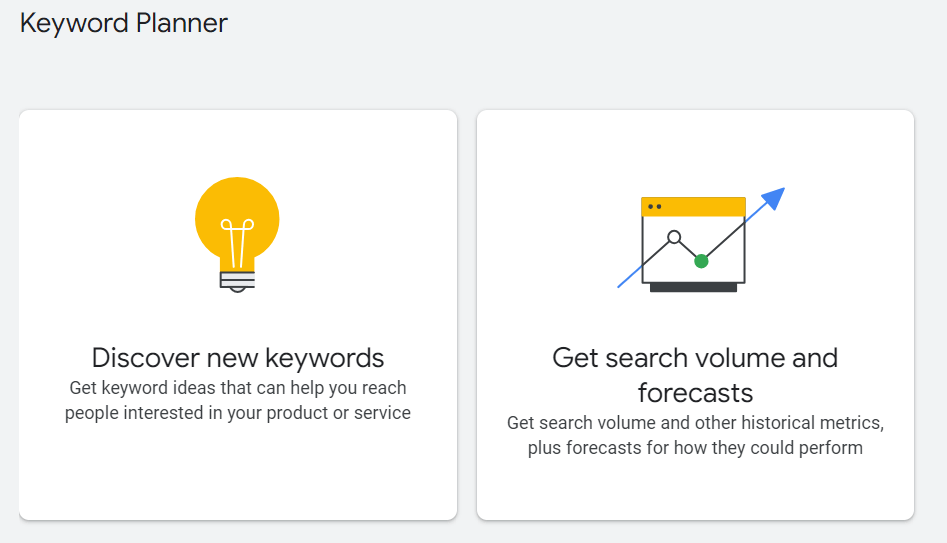Digital marketing agency in kerala
Table Of Contents
- 1. SEO for Beginners: Understanding the Basics
- 2. Conducting Keyword Research
- 3. On-Page SEO: Optimising Your Content
- 4. Technical SEO: Preparing Your Site
- 5. Building Backlinks: Off-Page SEO Basics
- 6. Tracking and Measuring Your SEO Efforts
- The Importance of E-E-A-T in SEO: Building Trust and Authority
- Frequently Asked Questions
1. SEO for Beginners: Understanding the Basics

What is SEO and Why It Matters for Your Website:
SEO, or Search Engine Optimization, helps your website show up more often in search engine results. Without it, your website might get lost in the SERP (Search Engine Result Page) and miss out on valuable visitors. For example, a small bakery used basic SEO strategies and saw a 50% increase in online orders in just a month. That’s the power of SEO.
How Search Engines Work: Crawling, Indexing, and Ranking: Search engines like Google use bots to look through your website, make a list of its content, and rank it based on how useful it is. Think of these bots as digital librarians sorting through the internet. Knowing how this works is essential for effective SEO and to improve your SEO ranking.
Common SEO Terms Every Beginner Should Know: Learn the basic SEO terms like keywords, meta descriptions, backlinks, and domain authority. These are like the tools in your SEO toolkit, you need to know what they are to use them effectively.
Here’s a quick breakdown of some key SEO terms to get familiar with:
- Crawling: The process where search engines send out bots to explore your website and gather information.
- Indexing: After crawling, search engines store the information from your website in their index to serve it up in search results.
- Meta Title: The title tag of a webpage, displayed in search results and browser tabs. It should be concise, relevant, and include your primary keyword.
- Meta Description: A brief summary of a webpage’s content, displayed below the title in search results, that encourages users to click.
- SERP (Search Engine Results Page): The page displayed by a search engine after a query is entered.
- Canonical URL: A tag used to tell search engines which version of a page is the master copy when multiple versions exist. It helps avoid duplicate content issues.
- Backlinks: Links from other websites to your own. They act as “votes” of confidence and can improve your website’s ranking. Here is an article for Building a Solid Backlink Strategy: Quality Over Quantity (2024 Guide)
- Anchor Text: The clickable text in a hyperlink. It should be relevant to the linked page and provide context to both users and search engines.
- Alt Text: Descriptive text added to images to help search engines understand what the image is about and improve accessibility for users with visual impairments.
- Keyword Density: The percentage of times a keyword appears on a page relative to the total word count. A good balance is essential to avoid keyword stuffing.
- Bounce Rate: The percentage of visitors who leave your site after viewing only one page. A high bounce rate may signal that your content isn’t engaging enough.
- Schema Markup: Code added to your website to help search engines better understand your content, improving your chances of appearing in rich results like featured snippets. Article for further information: The Importance of Schema Markup for SEO in 2024: Boosting Rankings and Rich Results
Here is a blog for SEO Tips for 2024: How to Rank Higher on Google
Now that you know the basics of SEO, let’s explore one of the most critical elements: keywords.
2. Conducting Keyword Research
Why Keywords Are Important for SEO:
Keywords are the words and phrases people type into search engines to find information. By using the right keywords, you can attract the right people to your website. For instance, a fitness blog targeting “beginner workout routines” instead of just “workouts” can attract more specific visitors who are just starting their fitness journey. Just like i used “ SEO for beginners”.
Tools and Tips for Finding the Right Keywords:
To find the best keywords, you’ll need a few handy tools. These will help you discover what your target audience is searching for and how competitive those terms are. Here are some steps to get started:
- Google Keyword Planner: A free tool that helps you find relevant keywords based on your business or topic.
- Ahrefs: Provides data on keyword search volume, competition, and traffic potential.
- SEMrush: A comprehensive tool for keyword research, competitor analysis, and tracking keyword rankings.
How to Use Google Keyword Planner:

- Log in to Google Keyword Planner.
- Enter terms related to your business or topic.
- Review the search volume and competition for each keyword.
- Choose keywords that align with your content goals and audience needs.
How to Use Keywords in Your Content:
Once you’ve selected your keywords, the next step is incorporating them naturally throughout your content. Remember, keyword stuffing, forcing too many keywords into your content, can harm your rankings rather than help. Here’s a quick guide on where to place keywords effectively:
- Titles and Headers: Always include your main keyword in the title and headers to signal relevance to search engines.
- Meta Descriptions: Use keywords here to help users and search engines understand the page’s content.
- Body Text: Include keywords in the first 100 words of your content and spread them naturally throughout the article.
Avoiding Keyword Stuffing:
While keywords are important, using them too often can lead to penalties from search engines. Aim for a keyword density of 1-2%, this means that for every 100 words of content, the keyword should appear once or twice, naturally.
Now that you’ve learned how to find and use keywords, it’s time to move on to the next important step, optimising your on-page content for SEO.
3. On-Page SEO: Optimising Your Content
The Importance of Title Tags, Meta Descriptions, and Headers: These elements help search engines understand what your page is about and encourage users to click on your links. Think of them as the headlines in a newspaper, they should be clear and catchy. For a deeper dive into optimising your on-page SEO, check out our article on 15 On-Page SEO Techniques to Boost Your Rankings.
Tips for Writing SEO-Friendly Content: Focus on creating good quality content that provides value to your readers. Use keywords where they make sense, but don’t overdo it. Here’s a quick SEO checklist for on-page SEO:
- Include your main keywords in your title and headers.
- Write clear meta descriptions that make users want to click.
- Link to other related content on your website to keep users engaged.
How to Optimise Images and Videos:
- Use descriptive file names (e.g., “red-bicycle-for-kids.jpg” instead of “image1.jpg”).
- Add alt text to all images and videos to help search engines understand their content.
- Compress large files to improve loading speed, which helps with both user experience and SEO rankings.
With your on-page content optimised, let’s explore the more technical aspects of SEO that can further enhance your website’s performance.
4. Technical SEO: Preparing Your Site
Why Site Speed and Mobile Optimization Are Important:
A slow website can annoy visitors and cause them to leave quickly, while a website that doesn’t work well on mobile devices can lead to a poor experience for mobile users. Google also prefers fast and mobile-friendly sites, so these factors are important for ranking. For more detailed insights, read our “10 Proven Techniques to Increase Website Speed and Boost Performance” and “The Complete Guide to Mobile Performance Optimisation in 2024”.
How to Set Up a Sitemap and Robots.txt:
A sitemap acts as a roadmap for search engines, guiding them to your key pages. Similarly, a robots.txt file tells search engines which pages to crawl and which to ignore.
Tools for Checking Your Site’s Technical Health:
- Google Search Console: Monitors your site’s search performance and identifies technical issues.
- Screaming Frog: Helps crawl your website and find on-page SEO issues.
- GTmetrix: Evaluates your website’s speed and performance metrics.
With your technical SEO foundation in place, it’s time to consider building authority with off-page SEO tactics, like backlinks.
5. Building Backlinks: Off-Page SEO Basics
What Are Backlinks and Why They Matter:
Backlinks are links from other websites to yours. They act as votes of confidence, showing search engines that your content is reliable and useful. A simple strategy to earn backlinks is to create high-quality, shareable content and ask partners or clients for links. To build a strong backlink profile, consider reading our article on Building a Solid Backlink Strategy: Quality Over Quantity.
Strategies for Getting Quality Backlinks:
- Write guest posts for well-known blogs to earn backlinks.
- Create shareable content that naturally attracts links from other sites.
- Engage in digital PR to get your website mentioned by credible sources.
How to Monitor and Manage Your Backlinks:
Tools like Ahrefs or Moz help you track backlinks and remove any spammy or low-quality ones. Keeping your backlink profile clean and authoritative is crucial for SEO success.
Now that you’ve set up a solid foundation with both on-page and off-page SEO, it’s time to track your efforts and measure progress.
6. Tracking and Measuring Your SEO Efforts
Key SEO Metrics for Beginners:
Focus on metrics like how much organic traffic you get, your bounce rate, conversion rate, and how well your keywords are ranking. Monitoring these metrics helps you see what’s working and what needs improvement. To learn more about which metrics matter the most, check out our guide on SEO Metrics That Matter: Key Performance Indicators to Track.
How to Use Google Analytics and Search Console:
- Google Analytics helps you track visitor behavior, traffic sources, and conversion rates.
- Google Search Console provides data on keyword rankings and identifies technical SEO issues on your site.
Tips for Continuous Improvement: SEO is always changing, so it’s important to keep learning and adapting to new trends and search engine updates. Follow SEO blogs or join online communities to stay updated on SEO tips and best practices.
The Importance of E-E-A-T in SEO: Building Trust and Authority
If you’re trying to improve your website’s SEO, one concept you need to know about is E-E-A-T. It stands for Experience, Expertise, Authoritativeness, and Trustworthiness, and it’s a big deal when it comes to how Google and other search engines judge the quality of your site and content.
To boost your E-E-A-T, the key is to create content that shows real expertise and experience in your field. For example, if you’re running a medical blog, having doctors or medical professionals write or review your posts can instantly make your site more trustworthy. Sharing your personal experiences, case studies, or even customer testimonials is another great way to showcase your knowledge and build credibility with your readers.
Trustworthiness is another major part of the equation. Simple things like having an SSL certificate (so your site is secure), displaying a privacy policy, and making your contact information easy to find all help make your website look trustworthy, not just to visitors, but to search engines as well.
Websites that focus on E-E-A-T, especially in industries like health, finance, or legal services, tend to rank higher because trust is so important in these areas. And the good news? By improving your E-E-A-T, you’re not only boosting your SEO but also building stronger relationships with your audience, giving them more reasons to trust and keep coming back to your content.
Check out what experts said on How E.E.A.T. Can Boost the Effectiveness of Your SEO Tactics
Main points:
- E-E-A-T: Experience, Expertise, Authoritativeness, Trustworthiness
- Show expertise by having professionals create or review content
- Share experience through case studies and testimonials
- Build trust by securing your site and being transparent
- E-E-A-T is important in industries like health and finance for better rankings